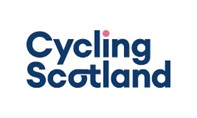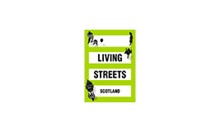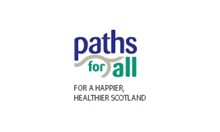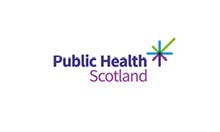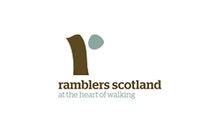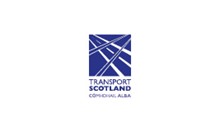How we can keep the wheels in motion
Walking, wheeling and cycling during Covid-19 in Scotland
One positive to come out of the first lockdown is that many of us got to know our local areas better by getting active.
To keep up this positive momentum, we're encouraging people to travel by foot, wheels or bike for essential journeys and exercise.
And to help you do this, we've put together a handy list below of all the information you need to keep safe and active during lockdown and beyond.
Share your experiences of walking, wheeling and cycling using the hashtag #wheelsinmotion.
The benefits of active travel
Getting out and about locally is positive for our wellbeing.
And it can be a fun opportunity for families to enjoy time together.
It can also support local businesses and give our sense of community a boost.
What’s more, walking, wheeling and cycling is better for our planet, and helps free up space on public transport for those who need it most.
And it isn’t something we need to say goodbye to
Walking, wheeling and cycling can be an everyday part of our lives for good.
We've set the #WheelsinMotion. So let's keep up the momentum to create a truly #ActiveNation.
So use our tips below to start enjoying the benefits of being active outdoors.
Let's keep the wheels in motion to continue walking, wheeling and cycling over lockdown and beyond.
Staying safe when walking, wheeling and cycling
We want everyone to be able to walk, wheel and cycle safely for everyday journeys and exercise, in line with Scottish Government guidelines.
It’s important that we all take measures to slow the spread of Covid-19, and show consideration to everyone.
We need to:
Be safe: Look after yourself and those in your care
Be smart: Stay in your local area and plan ahead
Be kind: Look out for others, particularly more vulnerable groups.
To help you easily follow these three steps, we've teamed up with:
- Transport Scotland
- Public Health Scotland
- the Mobility and Access Committee for Scotland
- and various active travel organisations in Scotland.
Together, we’ve put together a list of things to consider when walking, wheeling and cycling during the Covid-19 restrictions.
Be safe
Look after yourself and those in your care.
Walk, wheel or cycle on your own, or with people you live with.
Keep 2 metres apart from those outside your household.
Use a face covering in line with latest government advice.
Where possible, avoid touching hard surfaces such as walls, fences and park benches.
Wash your hands for at least 20 seconds or sanitise your hands before and after going out.
If cycling or using a wheelchair, wash your bike or wheelchair surfaces that may have been touched by others and clean your wheel push rims after each wheel.
Be smart
Stay in your local area and plan ahead.
Try to visit places you know will be quiet, away from hotspots.
But equally, make sure you feel comfortable and safe, particularly if walking alone.
Consider bringing things you may need – hand sanitiser, face covering, contactless payment options.
If cycling or running, stay within your ability level.
Be aware that people may be queuing outside shops, pharmacies or health centres.
Please follow signs and try to help others to maintain the 2-metre distance where you can and they cannot.
For example visually impaired and blind people, wheelchair users or people with reduced mobility, families with small children, people with babies in pushchairs.
Be kind
Be mindful of others when walking, wheeling or cycling, particularly more vulnerable groups.
Guidance for everyone
Consider exercising at less busy times of the day and avoid hotspots.
Slow down, respect others and give older people and people with poor mobility, visually impaired and people in wheelchairs priority.
Be patient with families with small children, and people with babies in pushchairs.
Be aware that some people may need to sit down.
On shared paths, keep left if possible and pass on the right.
If you have a safe place to move off the path to let others pass then be considerate, wait a moment and create the space to allow them to pass.
If wearing headphones, be aware that you may not hear people ringing a bell when passing.
On shared and non-segregated paths, please be patient and considerate of each other.
Create space to physically distance where possible, and move at an appropriate speed when passing
Be considerate of others and take litter with you.
When driving, slow down, give space and be aware that people on bikes may need to cycle out from the kerb.
Remember that people walking or running may step on to the roadway to allow others physical distancing space on the footpath.
When cycling on the road, be aware that runners or people walking may momentarily go onto the roadway.
So ride away from the kerb to allow others physical distancing space on the footpath.
When cycling, ring your bell or call out when approaching people and be prepared to stop if it’s difficult to pass.
Please be mindful that a bell may not be sufficient warning to pedestrians with hearing, visual or mobility impairments.
Walking, wheeling and running
Listen out for bells and calls from people on bikes. Allow people cycling to pass.
Runners, be careful to give full physical distance when passing people and be prepared to slow down if it is difficult to pass.
Please do not spit, especially where people need to wheel, as this transfers onto their wheels, gloves and hands.
Dog walkers
Keep dogs on a lead if there are likely to be other people around.
Clean up after your dog.
Consider the needs of older people and disabled people
Give extra space to disabled people including anyone using a mobility aid such as a wheelchair who may not be able to move out of your way.
Be aware that not all disabilities, including sight and hearing loss, are visible and most hearing aids only have a range of 1 metre.
This could mean that whilst you must maintain the 2m distance, people may find it more difficult than usual to understand you.
Don’t assume that everyone who is disabled should be shielding.
If in doubt, stop and ask what makes it easier to pass safely.
Remember the changes to infrastructure required for social distancing are harder for disabled people.
And many people will may feeling anxious about using these routes and lanes.
Please do not park on or obstruct pavements at dropped kerbs as this causes further barriers.
Be patient with people who take a little longer to pass or who need extra room due to their mobility aids (wheelchairs, mobility scooters, long canes, guide dogs, walking frames).
Remember guide dogs are not trained to physically distance but will continue to guide their humans along recognised routes.
With thanks to our partners
